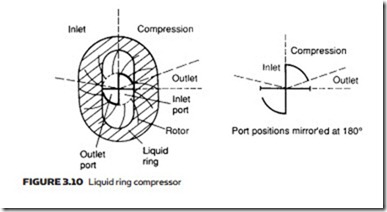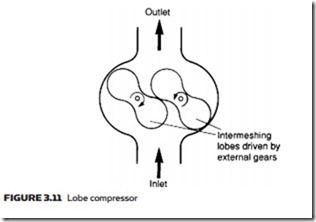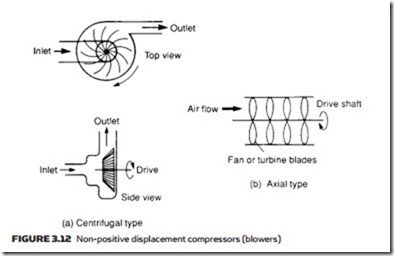dynamic compressors
A large volume of air (up to 5000 m3 min−1) is often required for applications such as pneumatic conveying (where powder is carried in an air stream), ventila-
tion or where air itself is one component of a process (e.g. combustion air for gas/oil burners). Pressure in these applications is low (at most a few bar) and there is no need for a positive displacement compressor.
Large-volume low-pressure air is generally provided by dynamic compres- sors known as blowers. They can be subdivided into centrifugal or axial types, shown in Figure 3.12. Centrifugal blowers (Figure 3.12a) draw air in then fling it out by centrifugal force. A high shaft rotational speed is needed and the volume to input power ratio is lower than any other type of compressor.
An axial compressor comprises a set of rotating fan blades as shown in Figure 3.12b. These produce very large volumes of air, but at low pressure (less than one bar). They are primarily used for ventilation, combustion and process air.
Output pressures of both types of dynamic compressor can be lifted by mul- tistage compressors with intercoolers between stages. Diffuser sections reduce
air entry velocity to subsequent stages, thereby converting air kinetic energy to pressure energy.
Positive displacement compressors use oil to lubricate the close machined parts and to maintain the air seal. Dynamic compressors have no such need, and consequently deliver very clean air.


